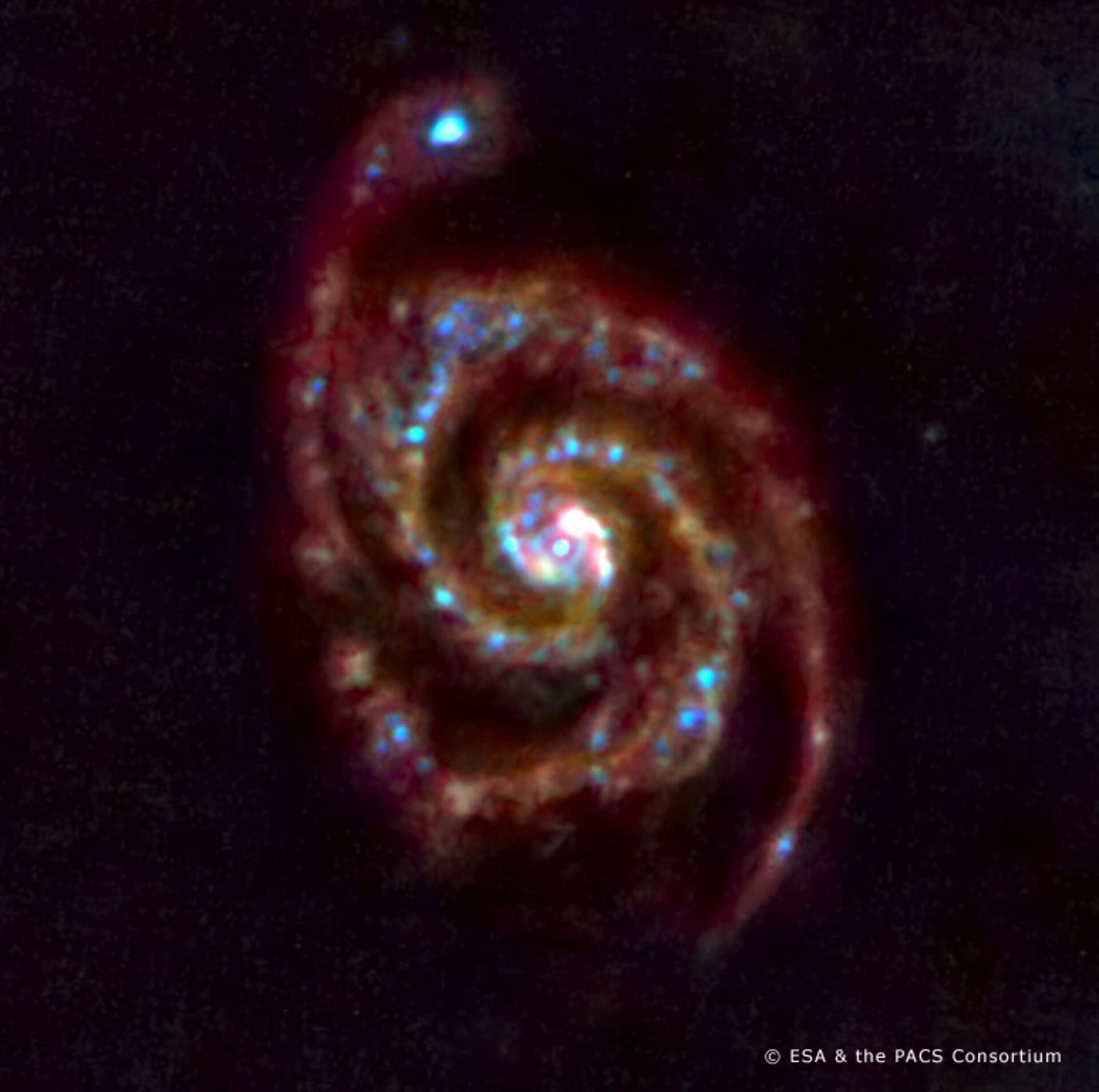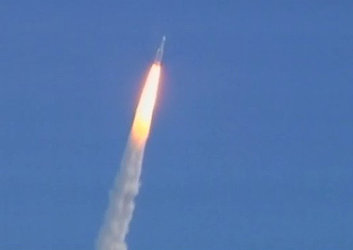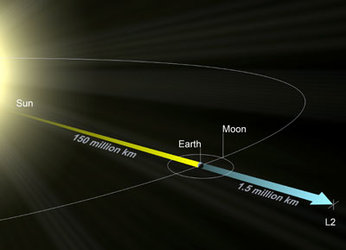Herschel’s daring test: a glimpse of things to come
Herschel opened its 'eyes' on 14 June and the Photoconductor Array Camera and Spectrometer obtained images of M51, ‘the whirlpool galaxy’ for a first test observation. Scientists obtained images in three colours which clearly demonstrate the superiority of Herschel, the largest infrared space telescope ever flown.
This image shows the famous ‘whirlpool galaxy’, first observed by Charles Messier in 1773, who provided the designation Messier 51 (M51). This spiral galaxy lies relatively nearby, about 35 million light-years away, in the constellation Canes Venatici. M51 was the first galaxy discovered to harbour a spiral structure.
The image is a composite of three observations taken at 70, 100 and 160 microns, taken by Herschel’s Photoconductor Array Camera and Spectrometer (PACS) on 14 and 15 June, immediately after the satellite’s cryocover was opened on 14 June.
Herschel, launched only a month ago, is still being commissioned and the first images from its instruments were planned to arrive only in a few weeks. But engineers and scientists were challenged to try to plan and execute daring test observations as part of a ‘sneak preview’ immediately after the cryocover was opened. The objective was to produce a very early image that gives a glimpse of things to come.
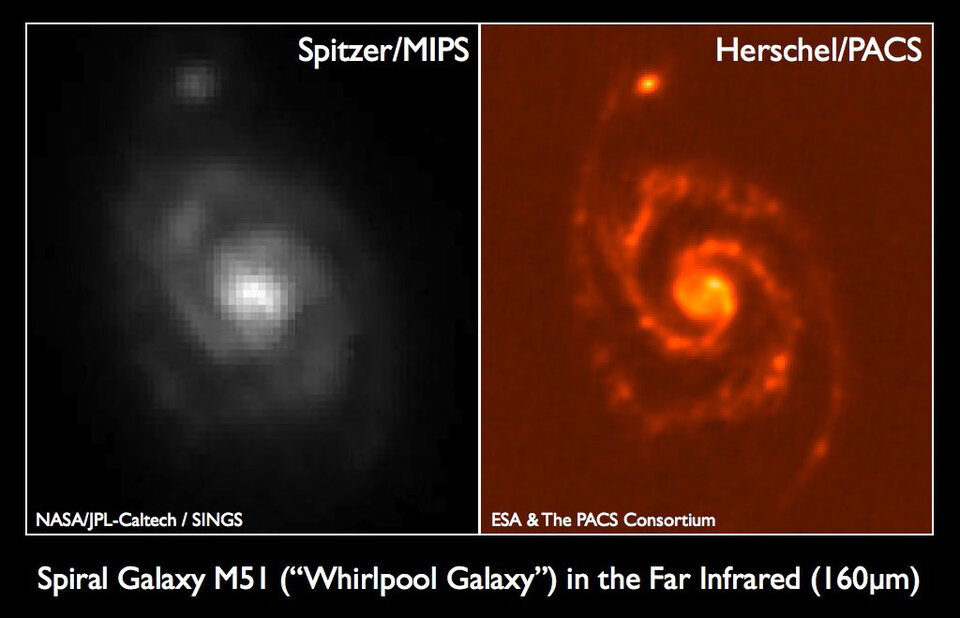
To the left is the best image of M51, taken by NASA’s Spitzer Space Telescope, with the Multiband Imaging Photometer for Spitzer (MIPS), juxtaposed with the Herschel observation on 14 and 15 June at 160 microns. The obvious advantage of the larger size of the telescope is clearly reflected in the much higher resolution of the image: Herschel reveals structures that cannot be discerned in the Spitzer image.
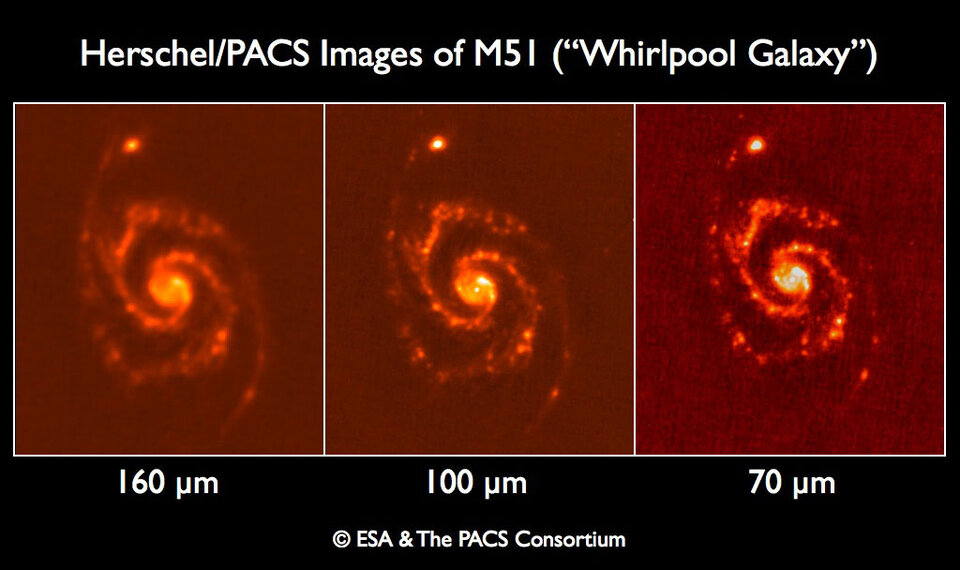
Herschel’s glimpse of M51 at 70, 100, 160 microns.
These images clearly demonstrate that the shorter the wavelength, the sharper the image — this is a very important message about the quality of Herschel’s optics, since PACS observes at Herschel’s shortest wavelengths.
Produced from the very first test observation, these images lead scientists to conclude that the optical performance of Herschel and its large telescope is so far meeting their high expectations.


